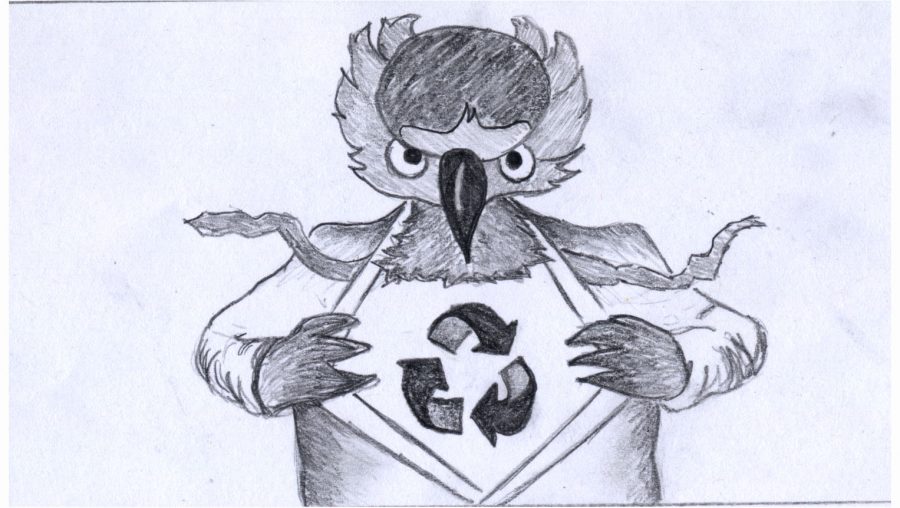April 23, 2014
Royal Purple Editorial Staff Opinion
As sustainability has grown in importance in America, more and more institutions push to reduce their waste.
Even with this push, some unfortunate statistics still ring true: the equivalent of 50 million barrels of oil was used last year to produce plastic water bottles, and 75 percent of those bottles went unrecycled, according to the Clean Air Council. In 2012, Americans only recycled 65 percent of the paper they used, according to the Environmental Protection Agency.
UW-Whitewater has done a good job so far of working toward a more sustainable campus, but administration, faculty and students need to take a few more steps to keep moving toward a sustainable campus.
Recently, water bottle filling stations have replaced regular drinking fountains throughout many campus buildings. The UW-Whitewater Water Council has helped implement these through its Take Back the Tap initiative.
This initiative also has led to a recent removal of all Aquafina water bottles from Ike Schaefer Commons and Graham Street Café. This is a solid first step. More venues on campus should follow this lead and stop selling bottled water on campus.
The use of paper is another issue that UW-W should address. One way to reduce paper use would be to provide students with e-books for textbooks, instead of using hard copies that need to be printed. Although this option may be expensive, it would be a way for UW-W to cut its paper use by massive proportions.
By switching a lot of course work to the Desire 2 Learn system, UW-Whitewater has attempted to address the paper use problem. This has allowed professors to have the option to post things online instead of needing to print them out, which wastes large amount of paper on things a lot of students throw away. But the infrastructure needs to be developed further to allow students to turn assignments in exclusively on D2L and eliminate paper copies completely.
Some ways for the university to further this idea is to mandate the use of D2L exclusively, or at least only allowing back-to-back printing, which would cut the paper use for some classes in half.
Green construction is another area where UW-W has taken strides in sustainability. Within the last five years, UW-W constructed Hyland Hall, renovated Laurentide Hall and revealed Starin Hall as a new residence for students. Laurentide and Starin Halls both have been gold certified by Leadership in Energy & Environmental Design (LEED).
LEED is an initiative by the United States Green Building Council meant to recognize and award buildings that are designed in a way that promotes sustainability.
Although Hyland Hall has not been recognized, it was built with solar panels installed to help with energy production. UW-W should review its entire utility profile to use biofuels and reduce air emissions. UW-Whitewater should pursue a trend of building sustainably and would be wise to renovate more buildings in the future, as a way to help reduce the entire campus’ carbon footprint.
Many of these reforms can be expensive, but students can help to pay for these in a relatively inexpensive way and support campus sustainability.
Whitewater Student Government put a referendum on the ballot in its most-recent election asking whether students would be willing to pay a $5 per student per semester segregated fee for a sustainability fund.
With an enrollment of just over 12,000 students, this could produce $120,000 per year.
Although this would not be enough to immediately make UW-W the most sustainable place in the world, it would give a good head start for helping campus become more sustainable in the future. It would be another step in the right direction, which are the kind of steps UW-W should keep taking.


